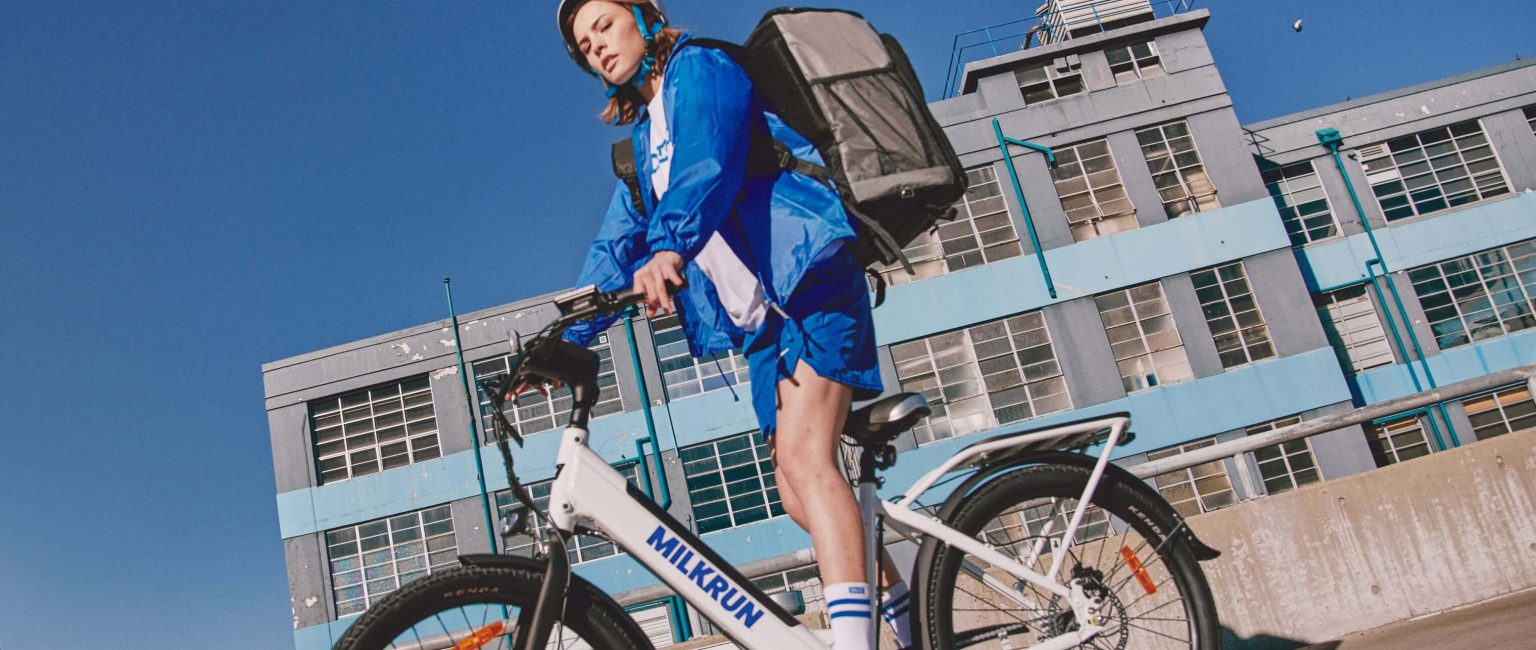As the supermarket wars go mobile and start-ups take on the giants, who will win?

The grocery retail space has been frenzied over the past year, and 2023 will be no different, with the most heated battles set to take place on mobile phones.
Buyer behaviour and priorities have shifted dramatically after consumers turned to online delivery during the pandemic, then wanted the in-store experience once lockdowns were over.
It seems many have become impatient with the speed of online deliveries while habits are increasingly driven by cost.
At the same time, retailers are trying to keep up while managing supply chain and labour market challenges.
Coles and Woolworths have stepped up their online services while investor-backed digital disruptors dominating the mobile space are trying to sustain the growth seen during Covid.
Many of the latter are failing.

Aussie delivery app Voly fell over in late 2022. Picture: Voly
Quicko and Voly in Sydney as well Send, which serviced Sydney and Melbourne, all exited the market during 2022.
Then just days before Christmas, Melbourne platform YourGrocer also shut up shop, citing “tough global economic conditions”.
For now, grocery delivery app Milkrun is powering on across metro Sydney and Melbourne, but there are reports it’s also struggling to remain profitable. Milkrun did not respond to requests for an interview for this story.
While it’s almost impossible for delivery apps to compete with the supermarket giants, they have still impacted the grocery market, experts say.
How fast will digital grocery shopping grow?
In June 2019, online food retail accounted for $441 million or about 4% of overall food retail, which was worth a total of $10.59 billion, according to ANZ stats using Australian Bureau of Statistics data.
By May 2022, that share had jumped to 7.7% after peaking at about 9% in September 2021.
“While the growth rate is quite impressive, it’s still a very small percentage and behind other countries where e-commerce is more developed,” Michael Whitehead, ANZ’s director of industry insights and agribusiness, said.
Once shoppers move online, they don’t tend to revert to bricks and mortar, according to Birger Maekelburger, retail and consumer goods partner within PwC Strategy.
That means the digital component of grocery sales has largely kept up post-Covid.
“Once you’ve made the transition, you usually don’t go back because it’s less convenient to go to the store, especially if you have to take kids.”

Supermarket giant Woolworths has invested heavily in its delivery service. Picture: Getty
Experts say online grocery sales will continue to grow but the rise will be gradual — largely because some people are enjoying a return to stores, particularly as they work more from home.
For supermarket giants Coles and Woolworths, this suits them just fine, because it’s still cheaper to operate a store than do an online delivery.
Nevertheless, online offers the corporates a valuable opportunity to grab market share from each other.
“Loyalty in grocery retail is largely driven by location in Australia,” Mr Maekelburger explained. “Those who live closest to Coles go to Coles; those who live closest to Woolworths go to Woolworths. With online, that no longer matters. It comes down to who is the most reliable.
“That’s why online is an important channel for them.”
Can the smaller players compete?
Analysts say it will be tough for any player to compete with the supermarket giants in the digital space, mainly because grocery is a scale game.
Plus, the lower density of the country’s population and larger distances goods must travel can make delivery expensive.
The only way for digital start-ups to survive is by proving their efficiency, and they’ve tried to do this through speed.
Initially, some promised delivery in 10 minutes, which ultimately proved unsustainable. Milkrun now simply claims to deliver “in minutes”.
At the same time, ultra-fast mobile services Uber Eats and DoorDash are pushing hard into the grocery and alcoholic beverages space.

Big players like Uber Eats are stepping up their game in the grocery and alcohol space. Picture: Getty
Mr Maekelburger said consumers are now enjoying being able to order ginger while they’re cooking a Thai curry or purchase a bottle of gin during a party if supplies run low.
“Once consumers get used to having a service, they change their buying behaviour. In response, service levels have massively increased.”
Woolworths has launched an under-one-hour delivery service Metro60, offering more than 4000 products delivered by Uber drivers to customers in Sydney and Melbourne.
Coles has expanded its mobile app Click&Collect Rapid service and now offers same-day home delivery, as do IGA and BWS, while Dan Murphy’s promises bottles on the doorstep in less than two hours.
Aldi is yet to launch online delivery in Australia.
Professor Gary Mortimer is an expert in food retailing, retail marketing and consumer behaviour at Queensland University of Technology and said digital start-ups will never be able to compete when it comes to range and price.
“Plus, both major supermarkets have invested hundreds of millions of dollars in dark stores, e-stores, micro-fulfilment and automated distribution to get products to customers’ homes faster than their competitors,” Professor Mortimer added.
The giants also capture more data on customer behaviour, so they can continue to personalise their offerings and delivery services.

Woolworths lobbed a bomb at start-ups with Metro60. Picture: Woolworths
How will cost-of-living pressures change things in 2023?
Inflation has been high over recent months, but food inflation has been even higher, thanks to extreme weather events plus higher production, energy, and fuel costs.
According to Treasury figures, food inflation peaked at 7.75% in December, but is expected to ease to 3.5% by June 2024.
As cost-of-living pressures continue to hurt Aussies, customers are more likely to shop around for savings, according to Euromonitor’s research, which found 28% plan to decrease spending and 21% will shift to private label or affordable brand options.
A further 28% will move to discounter providers, like ALDI, to save money.

Cost-of-living pressures may have a further impact on consumer habits. Picture: Getty
While families are unlikely to prioritise speed over price, high-income city dwellers without children or mortgages — those most likely to use apps such as Milkrun — may be different.
“Milkrun serves a valuable niche and they’re happy to just play in the niche,” Mr Maekelburger said.
“They’ll want to take those customers through to the family age to become the future big spenders as well.
“So, it’s quite important — less from a revenue perspective today but from a lifetime value perspective — to keep them close and provide the services that they’re after.”







